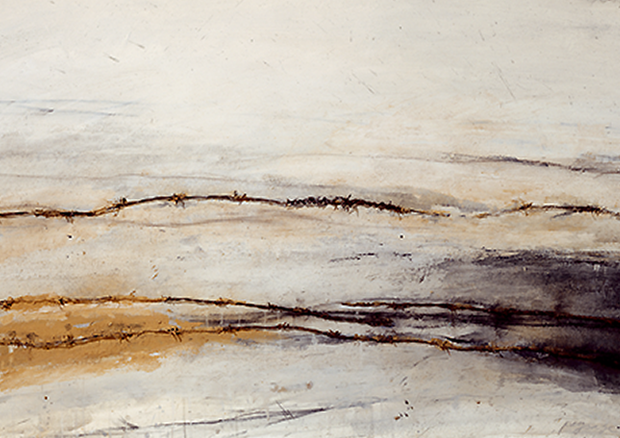Rolf Iseli. «Layers of Time»
Since his startling emergence on the art scene in the 1950s as a wild young Tachist, Rolf Iseli (*1934) has remained one of the best known Swiss artists. This retrospective exhibition at the Kunstmuseum Bern surveys the artist's fifty-year-career by means of about one hundred works - large groups of paintings and drawings, sculptures and prints - which Iseli produced in his studio in Berne and in St. Romain in Burgundy.
In 1957 Iseli caused a public sensation when he won the Swiss Federation Art Scholarship for a canvas covered in splashes of ink; Sam Francis asked him to exchange paintings with him; he was photographed bending over a work beside Barnett Newman - Rolf Iseli had his finger on the pulse of the nineteen-fifties-era and was regarded, alongside Jean Tinguely and Bernhard Luginbühl, as being among the most promising "dark horses" on the young Swiss art scene. He was one of the few Swiss artists to visit not only Paris but also New York, and he translated what he had seen in those art metropolises into one of the most coloristically intense and gesturally radical contributions to Abstract Expressionism in Switzerland.
However Iseli did not stick to that abstract pictorial idiom, like many of his colleagues, but instead kept himself and his work in motion. In the mid-1960s he visited Moscow, travelled through China and then totally re-positioned his work. His brief excursion into Pop Art in the early 1970s became manifest in cast-iron sculptures, some of which received prominent places in the public domain; these cite numbers and other commonplace items and were produced in collaboration with the legendary wrought and cast-iron section of the Von Roll company.
Iseli then retired to Burgundy, to the rural town of St. Romain, and this move was reflected in his work. In 1971 he produced his first 'earth picture' by processing materials from his immediate surroundings, such as earth, honeycombs, straw and wire. In addition to the 'earth landscapes', which frequently have figurative associations and also recall the tachist works of the 1950s, the human figure also became an important element in his 1970s repertoire. Iseli's own silhouette crops up in countless variations. His Homme de Terre visualises the close link between nature and figure; in this period the artist re-worked lithographs with earth and charcoal and also added text fragments.
In the 1990s Iseli spent a lot of time in Javea (Spain), where the Mediterranean landscape became a new source of inspiration for him. The resulting works have a heightened brilliance and colourfulness. The artist's most recent works are also characterised by his affinity with earth and his exploration of technical possibilities and processes on paper. His lines are elementary experiences the directness of which is irresistible.
The exhibition at the Kunstmuseum Bern shows works from all stages in his artistic career: Informel, early oil paintings, objects, earth pictures, as well as prints and his latest works.


